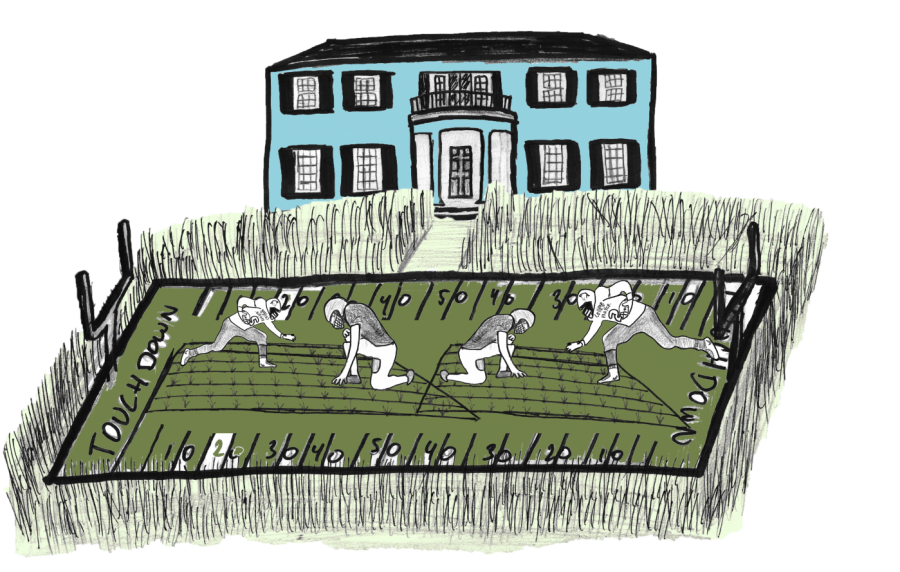Football is back, and along with it comes fantasy football. Fantasy football has been around for decades, and grows every year in terms of popularity and overall participants.
Despite that many people are completely in the dark as to how fantasy football works. I was recently talking to a friend of mine (who is definitely not a sports fan), and she thought that fantasy football entailed a bunch of grown-ups, wearing a jersey of their favorite player and running around pretending to play football – essentially a live-action-role-playing version of football. After I was done laughing, I mentioned that while it’s not even close, it’s also not a bad idea. I then proceeded to explain how fantasy football actually works. Even though my friend lost interest instantly, I was inspired to write an article giving a basic explanation of fantasy football.
Though there are many ways to play fantasy football, for the sake of explanation, I will use a common process that most players use when entering into fantasy football for the first time. The first thing you would do is to find one of several fantasy football websites to sign up for. I recommend Yahoo fantasy football. They have an app that can be downloaded, it’s very intuitive and easy to use. Once you have your website picked out you’re going to join a league. A Yahoo standard fantasy football league will consist of 10 teams which will be managed by random people from around the world (a potential opportunity to make new friends, and you will).
Once you’ve joined a league, it’s time to draft your team. When you join a league it will specify the day and time of your draft which usually takes around an hour, and this is how the draft works. Each team manager will be randomly assigned (by Yahoo) a draft pick that will number between one and 10. Generally the 1st pick is most desirable because you can pick the highest ranked player in football. For example, a consensus 1st overall pick for this year was the 49er’s own Christian McCaffrey (a disaster pick so far, but that’s another story).
Though the assumption is the players would be picked in the order they’re ranked, this is actually an opportunity to employ your own football knowledge to get the upper hand on the rest of the league. Once a team manager has picked a player, that player is now owned by only that team and is no longer available to be drafted. The draft will continue this way with each player going to a single team until all the spots on the 10 different teams are filled.
Now that you’ve drafted your team, here is where the heart of fantasy football plays out. In a Yahoo standard league, each team will play weekly head-to-head matchups against other teams from the league. Every team in a Yahoo standard league will have a starting lineup consisting of one quarterback, two wide receivers, two running backs, one tight end, one flex spot (this can be a receiver, running back, or tight end), one kicker spot, and one spot for team defense. Each team manager will decide which of their players to insert into these starting spots, and the idea is to start the players you think will perform best in real life during their actual football games. The reason for this is, the fantasy points your starting players will score are directly correlated to what the real-life version does in their actual football game.
Let’s use the 49ers quarterback Brock Purdy for example. On Sun, September 22nd the 49ers played against the Rams. During that game Purdy passed for roughly 290 yards with three touchdown passes, and rushed for roughly 40 yards with one lost fumble. Which in a yahoo standard league equates to roughly 25 fantasy points. Despite an ugly loss for the 49ers this was an above average day for Purdy in terms of fantasy football points. Whichever team has the most points from their starting lineup at the end of that week’s football games, will be the winner of their head-to-head matchup for that week.
The winning team’s record will be 1-0 while the losing team’s record will be 0-1. There will be 13 more regular season head-to-head matchups, 14 in total. With each week being played out the same way, leading to either a win or loss based on the combined point totals of your starting lineup. At the end of the regular season the top six teams that have the best win-loss record will advance to the playoffs, which are also head-to-head matchups. Eventually one team will be the league winner and crowned as the champion.
There is also something called the waiver wire that allows team managers to add other players on a weekly basis that were not drafted, and are perhaps performing above expectations. You can do this right through the fantasy football app or website. You would submit a waiver claim for the player you want (sounds more complicated than it is). You would then have to pick a player from your team to drop as each roster has a limited amount of spots. The waiver wire provides team managers with an opportunity to improve a struggling team or overcome a bad draft. It also provides an opportunity for team managers to overcome a slew of injuries to the team they drafted (the story of my fantasy life).
Though fantasy football is played for free, it’s ultimately another form of gambling, which helps drive the popularity of the format. You can absolutely play for free, or join a free yahoo league, but there are also paid leagues, or “prize” leagues. The prize leagues range all the way from $5 entry fees up to $2,500. What fantasy football really provides is a way to take all that otherwise useless football knowledge and make something of it, including potential money. But perhaps more importantly, fantasy football provides a ton of fun and another reason to stare at your phone for hours.
If you’re curious to learn a little more about fantasy football, our editor in chief Shawn Williams and I are planning to release a podcast in the next month to go slightly more in-depth about how fantasy football works.



